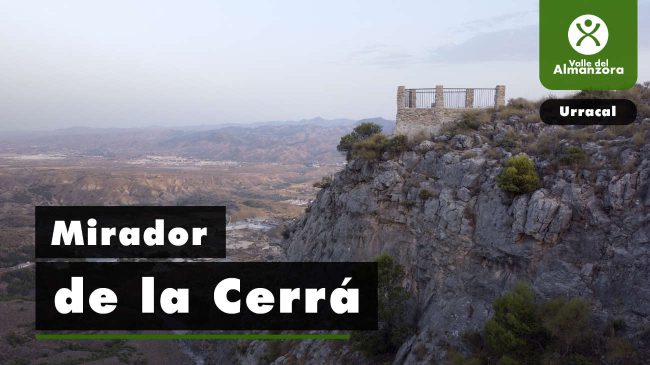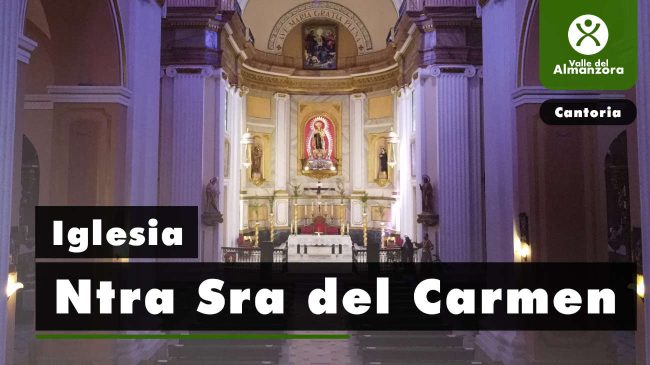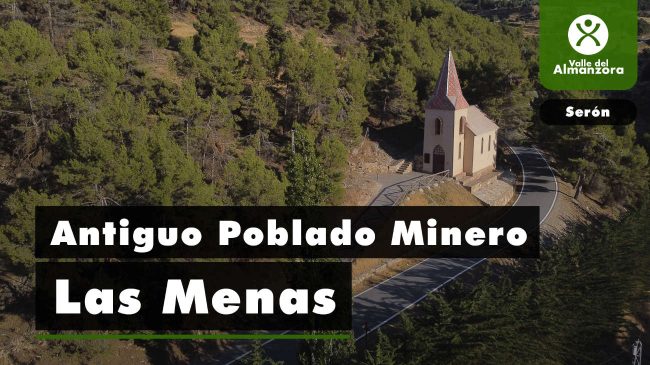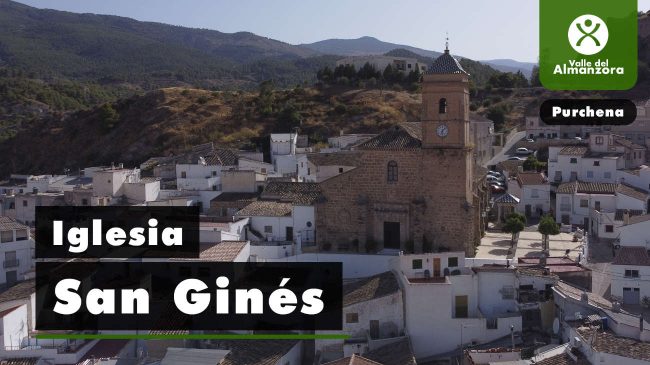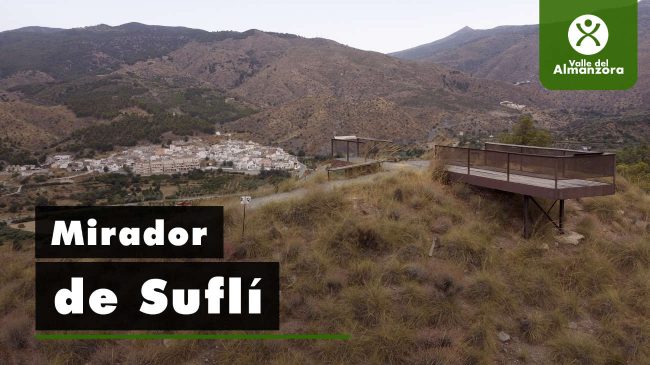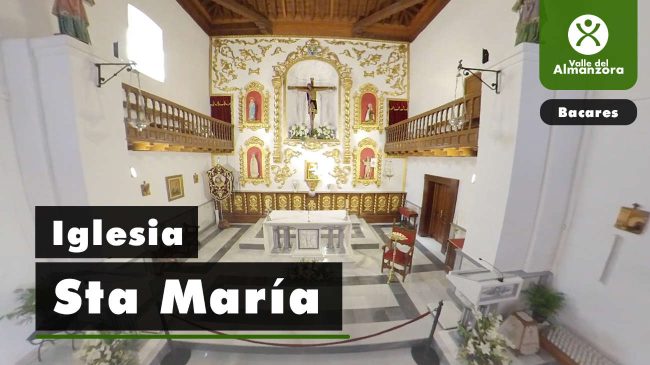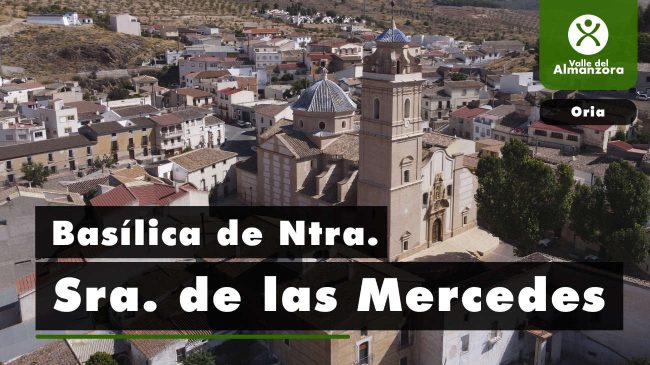Videos of the 30 Wonders of Almanzora
Every week we will publish new videos of the 30 wonders of Almanzora.
The 30 wonders is a selection of the most interesting places in your visit to the Almanzora Valley. Our region is very extensive and you may not have time to visit everything in one trip, so you may have to go back to visit other places. We advise you to visit the points that you have closer, that you enjoy them, that you appreciate the essence of each place, of each corner, as if you were the “last visitor”. Make the journey with your loved ones and you will take an unforgettable memory of your trip to the Almanzora region.

Ethnographic Museum
Taberno, Almeria
The Museum of the Field of Taberno or ethnological museum was created in 1998 with the objective of recovering and preserving all those objects that during the last two centuries were used by our ancestors; such as work tools, machinery, utensils, etc.

Woman from Almanzora
Calle Infanta Cristina, Olula del Rio, Almeria
The sculptural work that the artist Antonio López, draws attention to its powerful dimensions with an approximate height of eight meters. This work by López will be the complement of the 'City of Culture', welcoming with its powerful presence to the entire cultural space.

Castle of Sierro
Castillo de Sierro. Almeria
Corresponds to the IX-XIII centuries. Located on the top of the farmhouse with the role of shelter and urban citadel. It emphasizes its prominent height and its wide visibility on the territory. It is a medieval castle-fortress of Berber Islamic style. It is located in the highest part of the inhabited nucleus.

Reservoir of Cela
Barriada Cela
Balsa de Cela is a spring of thermal waters located 3.5 km from Tíjola in a northerly direction, on the border with the municipality of Lúcar, and at an altitude above sea level of 720 meters. The waters emerge naturally with a constant flow of 42 liters per second and a temperature that is maintained at different times of the year between 22 and 24 degrees Celsius. Already in Roman times there was reference to the richness of the thermal waters of the then Tagilitana Republic (current Tíjola).

Walk through the Laroya Village
Laroya
From Macael we can take an optional tour that climbs the hillsides of Los Filabres, to the village of Laroya. We encourage you to leave your car at the entrance of the town, as it becomes useless in the tiny alleys that make it up.

Castle District of Lijar
Lijar (Almería)
The Arab past of the Barrio del Castillo determines the narrowness of its streets. The alleys and revolts are abundant, with whitewashed houses and traditional construction: a single floor for housing, and taking advantage of the unevenness of the ground, in the back, leaning on the mountain, the corrals.

Church of Santa María – Bacares
Plaza de los Filabres s/n - Bacares. Almería
The Parish Church of Santa María was built in 1502. The Mudejar-style coffered ceiling stands out, of great beauty. Inside is the Santo Cristo de Bacares, an image highly revered in the province of Almería.

Museum-Center of photography Pérez Siquier
Avenida Maestro de Huitar, Olula del Rio, Almeria
The museum of photography "Pérez Siquier" is a tribute to Carlos Pérez Siquier considered one of the pioneers of the photographic avant-garde in Spain and National Photography Prize in 2003. Carlos Pérez Siquier (Almería, 1930) is a Supernumerary Academic of the Royal Academy of Fine Arts of Our Lady of the Anguishes of Granada.

Marble Interpretation Center
c/ Garcia Lorca, 50. Macael. Almería
The Marble Interpretation Center is conceived as a cultural space where history, tradition, innovation and future harmoniously coexist to offer us a vision of the Macael marble culture. It fulfills a triple function as visitor reception center, tourist information point and interpretive space that enables a contextualization of the Macael marble culture.

The Menas
Las Menas, Seron, Almeria
Las Menas Poblado Minero is an old mining town located in the Sierra de los Filabres belonging to the municipality of Serón. In this place iron was extracted from the end of the 18th century until the year 1968.

Viewpoint of the Castle of Oria
Calle Ciezar, s/n. Oria. Almeria
The idea of the project to increase the presence of existing ruins using only a few elements and clean the place (hide undesirable elements) is a way to clarify the meaning of the landscape. The project does not try to recreate old walls, but tries to recover the memory and meaning of these places. So we created a small route to guide visitors and show them the hidden remains and meanings of the place. The main idea of the design inside the castle was to emphasize its defensive use. To do this, we recreate the path of the patrol, eliminating…

The Carved Stone
Chercos. Almeria
La Piedra Labrada or Piedra Labrá: located in those of Chercos Viejo, it is a prehistoric archaeological-monumental complex, distributed in several rocky panels, where scenes of the tribal life of the first settlers of Chercos are engraved. The rock carvings are represented distributed on the rock's own exfoliation faces, of slate-schist origin, sometimes clearly separated and sometimes superimposed, merging with each other, almost certainly due to the successive over-engraving from the Bronze Age to perhaps the Middle Ages. The most common representations, of a schematic and / or macroschematic type, are anthropomorphic with arms akimbo, indaliforms, armed warriors, horsemen, chariots…

Our Lady of Carmen Church – Cantoria
Plaza Juan Carlos I, s / n. Cantoria. Almeria
The Iglesia Nuestra Señora del Carmen was built in the 19th century, between 1816 and 1870. Architecturally it is closer to being a cathedral. It has neoclassical characteristics: a Latin cross plan, two lateral naves, covered by a barrel vault with a dome in the transept. The foundations are made of ashlar stone on which are raised stone masonry walls alternated with courses of solid brick.

Viewpoint Las Canteras of Cosentino
Mirador Canteras de Cosentino. Macael
Alto Interés Turístico. Macael está inexorablemente unido a la palabra Mármol. Las canteras muy próximas al casco urbano han sido explotadas desde muy antiguo, constituyendo el núcleo de explotación de rocas ornamentales más importante del territorio nacional.

Castle of Seron
Calle del Castillo, s/n. Seron. Almeria
The Serón Castle is from the Nasrid period (13th century) and is located in the highest part of the town. From here you can see the entire Almanzora Valley, the Sierra de las Estancias and part of the province of Granada. It played an important role in Muslim times due to its defensive nature and served as a refuge in the uprising of the Moors. Only one wall and some wall paintings remain of the original fortress. The Castillo de Serón plant is rectangular formed by trapezoidal cubes with wide bases where towers are built, built with masonry joined with…

Sierro River
Sierro, Almeria
Sierro rests at the foot of the Sierra de los Filabres, on the northern slope of that mass of slate. Its gently sloping hills are currently covered by uncultivated almond trees and by "bolinares" and other landscapes of semi-arid scrub that occupy the old farmlands of the dry-land farms that have been abandoned in the last thirty years.

Serón History Center
Surroundings of the Castle. Serón (Almería)
A visit through time, where the visitor will find in this sample many of the answers about the culture, traditions and the architectural, industrial and landscape singularity of the Municipality of Serón.

Greenway of Olula del Río
OLULA DEL RÍO, ALMERÍA
It was built to give quick exit to the mineral that housed the area. Its exploitation began between 1906 and 1907 by several companies with English capital, until at the end of the last century it passed into the hands of the Spanish capital. Disused since 1985, now it will become an itinerary of great accessibility and security for all types of users

Alfareria – Museum Los Puntas
Pottery with Arab Furnaces declared Historic-Artistic
Calle San Leonardo, 30 - Albox - Phone: 670673640

Greenway of iron – Seron
SERON, ALMERÍA
The Natural Path Vía Verde del Almanzora Tramo del Hierro, is an old disused route of the Guadix-Almendricos railway that dates back to 1894, as it passes through the municipality of Serón, nowadays a non-motorized itinerary to be traveled on foot or in bicycle. The Green Route of the Iron constitutes an attractive and sustainable means for visitors to enjoy our natural space, facilitating the practice of an active and healthy leisure and favoring the recovery of an important part of our heritage, a vestige of mining activity. La Vía has a route of 11.8 km with a minimum slope,…

Partaloa viewpoint
Piedras del Castillo - Partaloa - Almería
The Partaloa viewpoint is a wooden construction of about 50 meters in length in the form of a corridor that ends in a closed balcony.
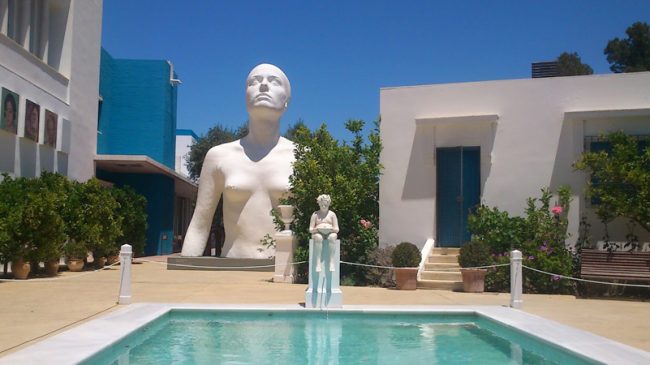
Casa Ibañez Museum
Calle Museo, 7. Olula del Rio. Almeria
El Museo Casa Ibáñez es una de las mayores colecciones de Arte Contemporáneo de Andalucía. Por la magnitud, variedad y calidad de sus fondos, más de 1.200 obras de arte, en las cuales se encuentran representados artistas contemporáneos de primer nivel como Joaquín Sorolla, Mariano Benlluire, Francisco Goya Lucientes, Pablo Picasso, Madrazo, Villegas Cordero, Golucho, Carlos Pérez Siquier, completando la extensísima colección del grupo AFAL, Carlos de Paz u Ortiz Echagüe, entre otros muchos. El principal exponente del Museo Casa Ibáñez es Andrés García Ibáñez, cuya obra se presenta clasificada en diversas series a lo largo de las primeras cinco…

Viewpoint of La Cerra
Camino de Campillo Purchena. Urrácal. Almeria
The viewpoints are those balconies, like the Mirador de la Cerrá, in which today we lean out to realize how big and beautiful is the power of nature, to delight us with such beautiful and impressive images, such as we can see from any viewpoint of the Almanzora Valley; these high places that we know today as lookouts are nothing more than the vestige of other times.

Sufli lookout
Highway A-334 - Deviation from Armuña to Suflí, Almeria
Our visits usually focus on urban centers and some external element, so we ignore 95% of the space.

Viewpoint of the Silveria
Purchena, Almeria
The viewpoint of the Silveria is located at an altitude of 1000 meters in the shade of Sierra de Filabres in the municipality of Purchena, the main mountain massif of Almeria and one of the largest in Andalusia. In its enclosure you can find the Recreational Area of La Silveria composed of several zones of tables with benches, barbecue area and in the lower part the viewpoint from which you can see beautiful views of the Almanzora Valley, nestled between the mountains of Filabres , Estancias and Lúcar. The Silveria is an area frequented by fans of mountain biking and…

Sanctuary of the Virgin of the Salient
Santuario de Nuestra Señora del Saliente - Albox
Located on the top of Mount Roel in the Sierra de las Estancias and built in the 18th century, it is the most important architectural jewel with which Albox counts, also declared a historical-artistic monument. The whole of the Sanctuary is of unquestionable beauty and simplicity combining in its construction elements of rural craftsmanship (the tufa stone) and ecclesiastical architecture reigning then in Granada. The Sanctuary shelters among its thick walls the spiritual Patroness of the town, the Virgin of the Salient, small in size but large in Marian devotion, spread throughout the Southwestern Spanish. The present building, as a…

Urracal Narrow
Estrecho Urracal, Urracal, Almeria
One of the places that most impress those who take a walk through the Almanzora Valley in the north of Almería, is "El Estrecho" located in the municipality of Urrácal. For decades it has not been possible to pass due to the large amount of vegetation that was on the ravine.

Bacares Castle
Calle Peanilla, Bacares. Almeria
Bacares Castle has been recently restored, consolidating and strengthening the ruins, improving access and creating walkways and viewpoints to visit and enjoy it. Regarding its origin, there are authors who classify it as Roman, others as Berber and others as Nasrid. It is documented that in 1506 it was restored by Gutiérrez de Cárdenas. It is small in size with a total of seven units.
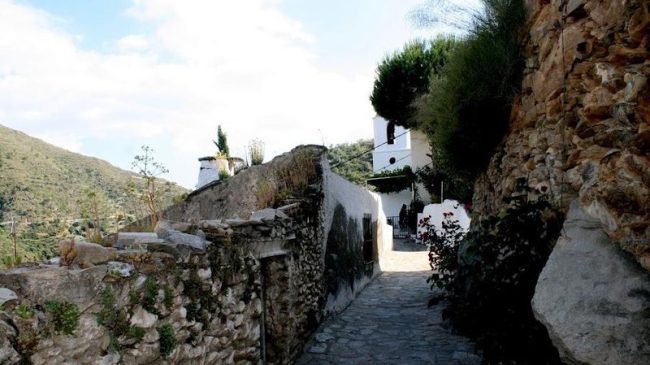
Old Chercos
Road from Chercos new to Chercos old (Almería)
Chercos, whose name derives from the Mozarabic word Yerku, which means "The Encina", applied to the place, due to the oak grove that was in its environment. Its origins date back to the Middle Ages, when we know that this town was populated by the Moors. Located in the Sierra de los Filabres. A town whose houses, hooked on an almost vertical slope, offers a most picturesque and sober balance show.
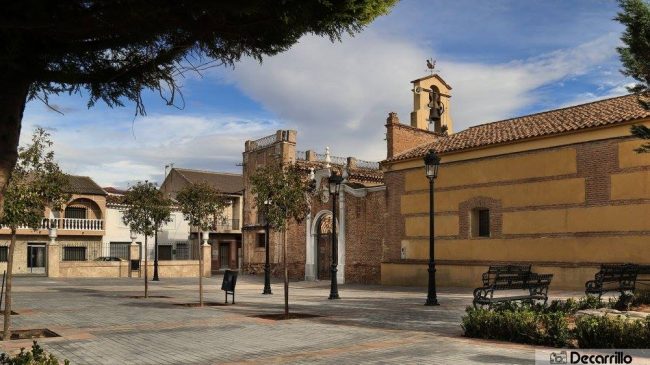
Almanzora Palace
Palace of the Marquis de los Velez in Almanzora from the 18th century
The Almanzora Palace is the most outstanding neoclassical art building in the entire province of Almería. It had its origin in the eighteenth century when in the Marquis of Los Vélez, it was decided to divide its geographical area into three administrative zones.

Church of the Annunciation – Seron
Iglesia Seron, Almeria
Construction of the 17th century declared a National Historic-Artistic Monument in 1983, where the two architectural traditions of that time converge in the area, the Mudejar, heir to the Islamic tradition, and the Christian. Its interior is diaphanous, rectangular in shape, formed by three naves separated by slender pillars that give the building noble proportions.

The world’s largest mortar
AL-8411, 12, 04867 Macael. Almería
The marble mortar inscribed in the Guinness Book of Records is a tribute to the artisans of Macael marble. The mortar (base) has dimensions of 3.29 meters. height, 3.07 meters. diameter of the mouth and 30.9 tons of weight; while the hand is 4.73 meters. high, 0.85 meters. of diameter and a weight of 5,820 Kg.

Urracal Laundry
Calle del Pilar, s/n. Urrácal. Almeria
It was created in 1947, before the construction of the drinking water and sanitation network. People made use of the laundry to soap and rinse clothes, today it is still used but much less than before. Until a few years ago the laundry had other uses.

Tíjola Railway Station and Locomotive
Old railway station
The old railway station located in Tíjola is less than 1km from the town. It is crossed by the recently completed Almanzora greenway. Next to the station there is a train machine that once traveled along the same route.

Fountain of the Lions
Plaza Constitución, s/n, 04867 Macael, Almería
The fountain is made up of 12 lions, all different in size and details, although gathered in three groups of four, depending on the similarity of their formal features; nose, hair of the mane, jaws and position and relief of the tail. The cup, 262 cm in diameter and 49 cm thick made in a single piece, has written on its perimeter 12 verses of the minister and poet Ibn Zamrak in which he describes the source.

Church of San Gines – Purchena
Calle General Rade, s/n, Purchena, Almeria
Its construction began around 1550 by the architect Juan de Orea, and did not end until the immediate dates of the rebellion of the Moors. Its style is Renaissance with notorious influences of the Mudejar Granada. It consists of three naves separated by two arcades that are supported by stone columns of oval section.

Basilica of Our Lady of the Mercedes
Plaza Constitucion, 1D, 04810 Oria, Almería
It is one of the most emblematic buildings of our municipality. Its construction began in 1767 by order of the X Marquis of Los Vélez, ending in 1779 under the marquisate of his son. It was declared an Asset of Cultural Interest in 1999, which gives it the highest degree of patrimonial protection. Recently, the pictorial decorations of the interior have been restored. This, together with the restorations made in 1992, has resulted in an integral recovery of artistic values. of the building, consolidating itself as one of the most representative buildings of the Almeria Baroque.
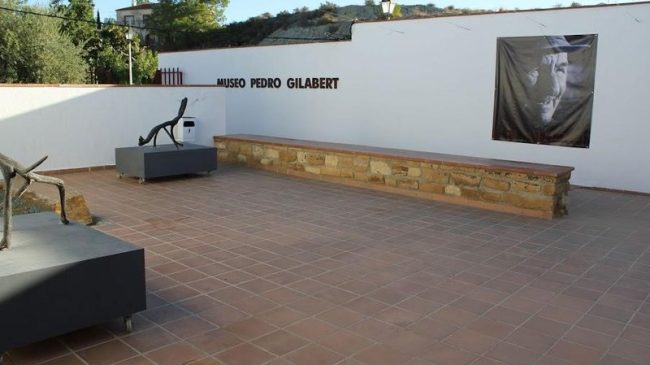
Pedro Gilabert Museum
Plaza Pedro Gilabert, s/n. Arboleas. Almeria
Opened in 2003, the Pedro Gilabert Museum is dedicated to the great naïve artist Pedro Gilabert, born in Arboleas in 1915. The permanent collection is made up of 142 sculptures carved in olive wood by the artist. In addition to 2 permanent exhibition rooms, the museum has an assembly hall and 2 traveling exhibition rooms. Thanks to these facilities, the Pedro Gilabert Museum has an extensive program of temporary exhibitions throughout the year, serves as the stage for traveling exhibitions organized by other institutions and hosts different cultural activities in the municipality and the region.



